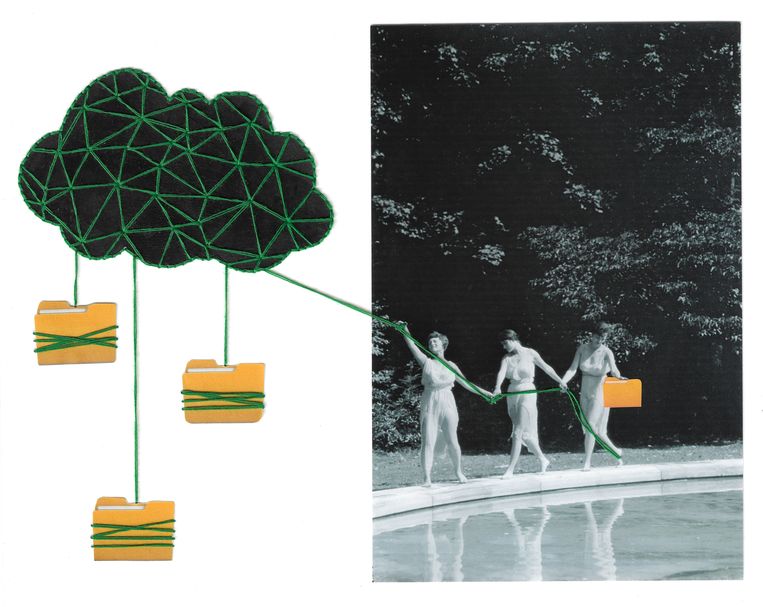
This is how you build your own personal cloud
VolkskrantI was criticized by readers a few months ago after I wrote that while a personal cloud server offers some advantages over, say, Google, such a home solution is also very problematic and not for the average consumer. That was short-sighted, according to these readers: the so-called NAS (Network Attached Storage) is now very easy to use. Time to put it to the test. But the first question: Why bother at all?
In short, a NAS is a computer with sufficient storage capacity and equipped with a network connection. Extra hard drive, but has a permanent Internet connection. Anyone who puts their photos, music, documents or videos on this NAS can always access these files from anywhere and from any device. In fact: it can be compared to well-known cloud services such as Google or Apple.
For the last two, the consumer has to withdraw his wallet every month. At Google 20 euros per year for 100 GB, at Apple 12 euros for 50 GB. Your online storage space – apart from energy – there are no monthly costs, but of course it has one-time purchase costs.
Privacy can also be a consideration: With a private cloud, the consumer is in control, while Google, Microsoft, or Apple have access to the photos or videos in the services they provide. They will also use these options if they suspect illegal substances. Regardless, it might be a good idea to have all your photos and other personal digital assets on your computer and not be at the mercy of one of the big tech companies.
a lot of clicks
We started with a device from Synology, a manufacturer that specializes in off-the-shelf NAS systems. This is called DS220 + It is a non-descript black case, similar to typical desktop computers. Installation is very easy. First I have to click on a hard drive (thirty seconds of work), then it goes online via WiFi or (preferably) via a network cable, of course a good password protected.

The following steps are a little tedious and require a few mouse clicks. Synology works with some kind of its own app store. For each application, the user must install a program via the browser. For example, for storing photos, this is Photo Station and for music Audio Station. If you want, you can even install your own chat server.
picture on video
Pictures and videos will take up most of the disk space for most people. Synology has two separate programs for this. These are pretty basic, but do what they’re supposed to do: All photos and videos can be accessed from other devices (mobile phone, tablet or other computers). The big advantage over Google Photo or Apple cloud: you don’t have to worry about extra costs. A 4 TB disk costs about 120 euros and provides space for about 500 thousand images.
There are also drawbacks. Google Photos in particular excels at finding images thanks to artificial intelligence. If you type the word “dog”, it will display all the pictures of his dog. Synology’s photo app doesn’t have this convenience. The pictures are arranged in chronological order and that’s it.

Music
Thanks to music streaming services like Spotify, using your cloud storage for music is somewhat less than before, but there are still audiophiles who swear by their own collection. For those folks, Synology has Audio Station software. The companion app on the mobile phone is called DS Audio. There are no playlists, let alone automatic recommendation lists like Discover Weekly, just a straightforward music player. Perfect for playing an old school album.
documents
Everyone is used to accessing your documents everywhere these days. And not only that: people also expect you to be able to collaborate on one common document. Compared to a service like Google Drive or Microsoft Office 365, Synology falls short in this app. First of all, this application is difficult to operate. Consumers hit by notifications like “Go to your Synology Drive admin console to enable your team folder” should continue to use Google.
The biggest drawback is the mobile application. This makes it possible to view the document remotely, but online editing is not included. Oddly enough, this is only possible in a (mobile) browser. In response, Synology says it is “exploring the possibilities of implementing this feature in the future.”
Is NAS recommended for ordinary consumers or not? There is no unequivocal answer to this: how the balance will turn out in the end depends entirely on one’s needs and use. First of all, there is a cost. If you don’t have a lot of photos, music, videos, or other files that you need to access anytime and anywhere, you’re better off with a cloud service. The Synology device we tested costs €530 (including 4TB of storage). Of course, there are also some energy costs: a few euros per year.
Then ease of use. It’s true that a NAS is surprisingly easy to use these days. Creating a personal cloud is easy. However, it still takes more time and effort than using an existing commercial service. These services also have more possibilities.
The other side of the coin is less tangible. It’s hard to define concepts like “privacy,” “not relying on big tech,” or “it’s good to have everything in your hands.” But those who, for whatever reason, do not want tech companies to look at their profiles in the cloud, it is better to consider NAS.

“Travel enthusiast. Alcohol lover. Friendly entrepreneur. Coffeeaholic. Award-winning writer.”
